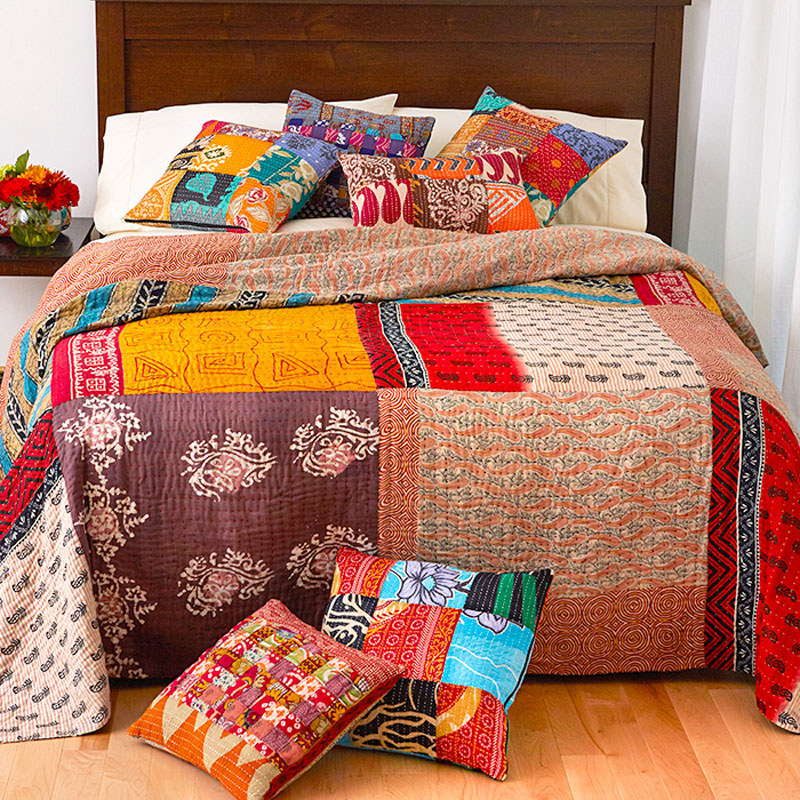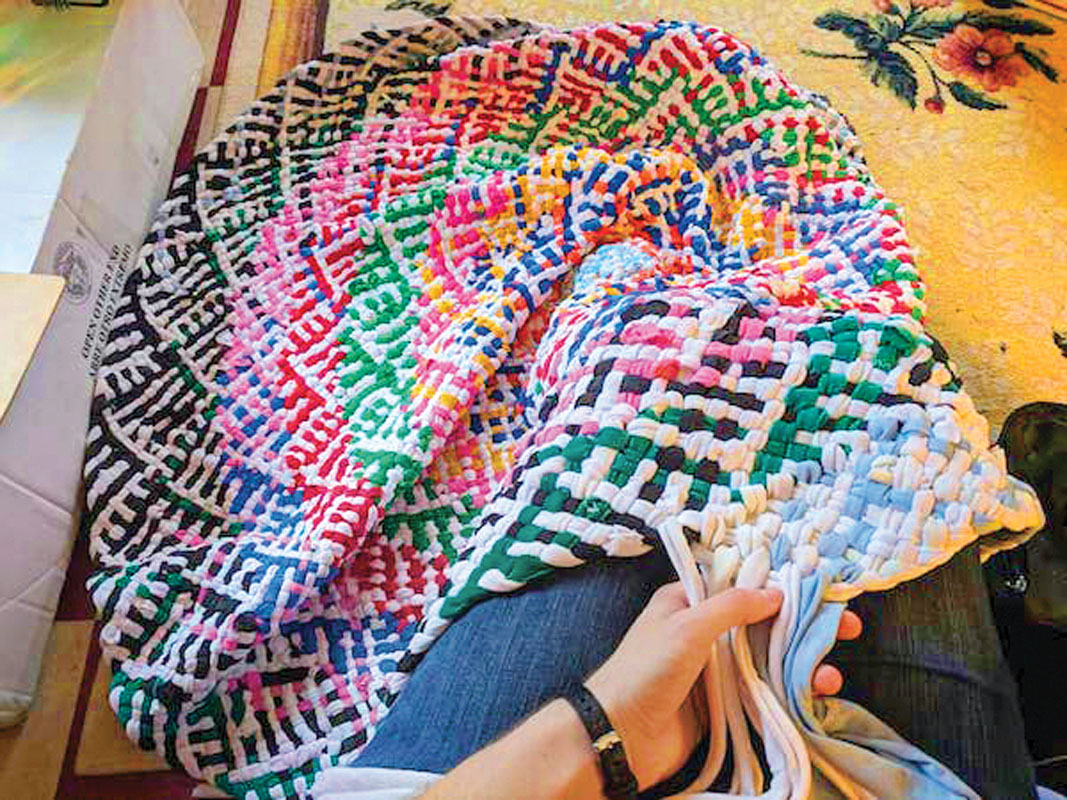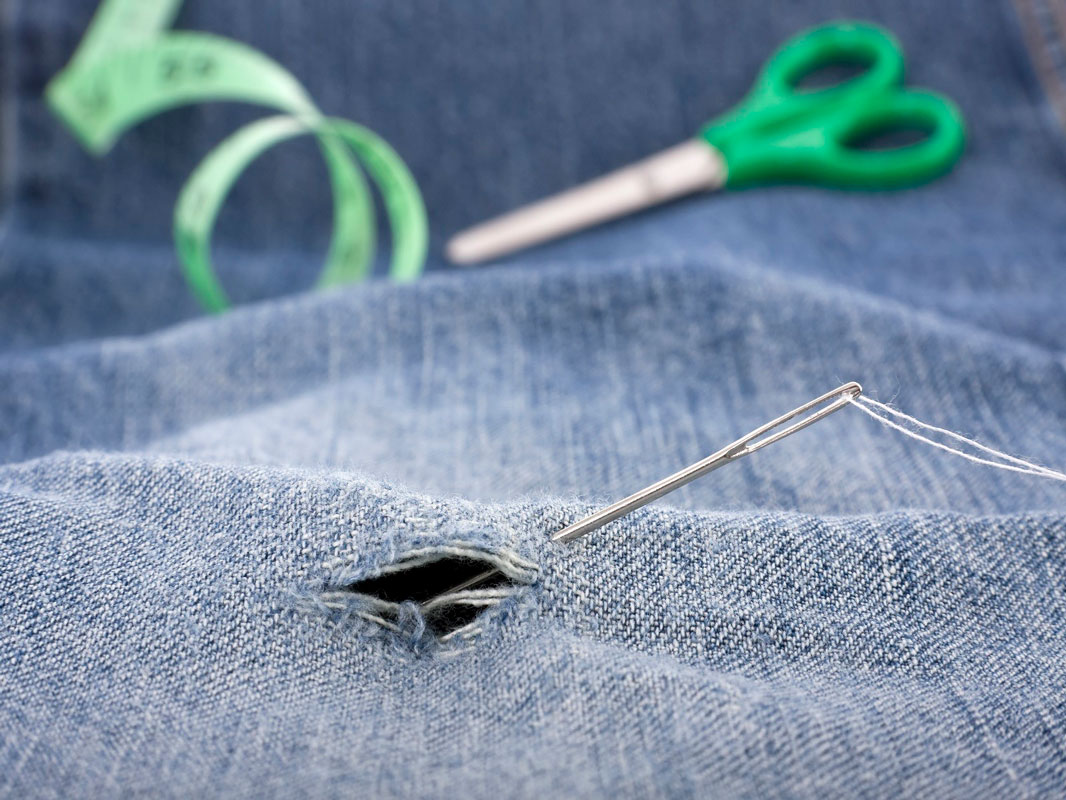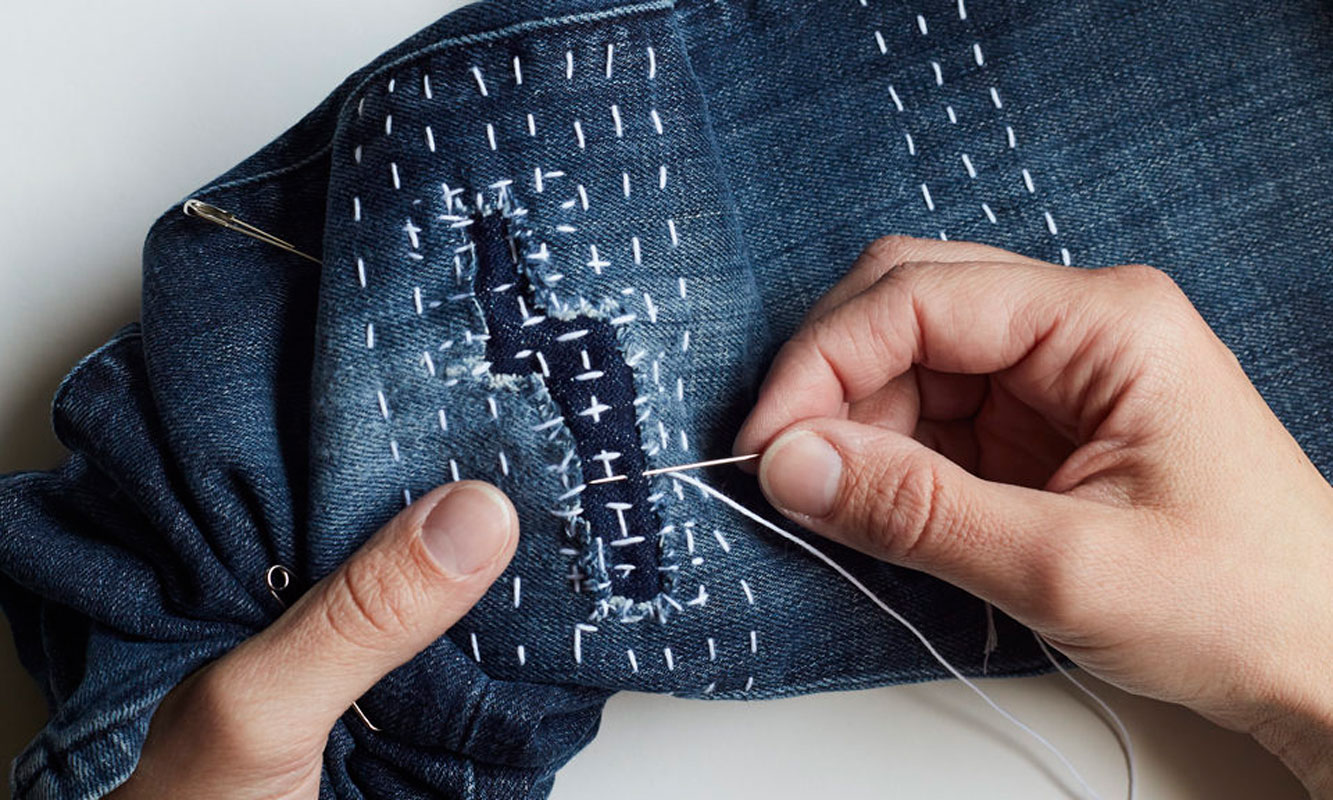Do you remember the saying, ‘A stitch in time saves nine’? Well, that stitch may also help the planet, make you feel good and help conserve resources. Luckily, there is no rocket science involved, just a periodic peek into the wardrobe and a few leaves from your grandparent’s book. They lived at a time when brands were few, fast fashion was unknown, and clothes were seen through a different lens.

In the previous issue, we read about the pollution caused by the textile and fashion industry, and its impact on climate change. But if we use our creativity and sensitivity more, we could control water usage and help lessen the chemicals and microplastics that find their way into the oceans.
And how would we do that? First, by not forgetting that we can sew. By simply threading a needle to fix the button that has fallen out, the pocket that has given way or the hem that has come unstuck. The simple act would prolong the life of a garment, prevent you from discarding it and help you to buy one less.
For the purpose of the article, I asked three youngsters, three middle-aged adults and a senior citizen what they do if their favourite garment develops a tear, its buttons fall off or its hem comes unstuck. Four gave me the same answer — that they condemn it to a corner of their wardrobe and forget about it. A waste no doubt. One said she gives it away, while the other followed an even more sustainable pattern. She piled up all the clothes that needed to be repaired and periodically, on the weekend mostly, called in a freelance tailor who fixed them all. The senior citizen repaired clothes herself, not only her own but that of other family members as well.
While all men and women may not be adept at stitching, calling in a tailor could be a great idea, especially at a time when most tailors are suffering joblessness due to the pandemic, and your help could go a long way in providing employment. However, try to ensure that the tailor uses thread made from natural fibres. A lot of thread is wasted while sewing and the use of natural thread ensures it can be composted.
But of course, if you really want to throw away a garment as we often do, it wouldn’t take much time to pluck out the buttons, undo the lace, cut out the zip and save them to use on another dress. Discarded or shapeless garments that have no use any longer, when cut to size, make great dresses for babies and frocks, smocks, shirts and shorts for kids. You would be really saving the planet by putting the crucial three Rs into practice — refurbish, reuse and recycle.
Another peek in your wardrobe could throw up even more creative ideas. Men’s worn-out ties, for instance, make great piping for dresses, torn shirts can be refurbished into handkerchiefs and torn jeans into hardy work shorts. The idea is not to waste if we can help it. We must not allow textiles, which pump between 1.22 and 2.93 billion metric tonnes of carbon dioxide into the atmosphere every year and account for 6.7 per cent of all global greenhouse gas emissions, go to waste and pile up in landfills. And especially when, with a wee bit effort, they can be reused and recycled into new garments.
For those who just do not have the time to sew or get cloth refurbished, there is yet a third option — collect your giveaways and pass them to an organisation that is recycling for a purpose. NGO Goonj, for instance, collects clothes in any state — even rags — and fashion them in its factory into amazing tablemats, door mats and floor rugs. It sells these to raise funds for helping the homeless or victims of natural disasters.
Talking of giving away old clothes reminds me of the tradition of exchanging clothes for steel utensils that exists in the country. I recall as a child being inquisitive when women came around our colony with steel plates, mugs, tumblers and tiffin boxes laden in baskets they carried on their heads. These would be exchanged for old clothes according to how many you gave them. As an adult when I became a journalist, I once followed their trail to find out that these clothes land up in a chindi bazaar, which exists in almost every town or city. The clothes were refurbished here, collars were turned inside out, pockets hid the blemishes, zari was repolished, and soon you had garments as good as new that made their way to the secondhand market to cater to a different section of consumers. So, we do have a long tradition of recycling and not wasting, but in this digital, online shopping era we seem to have forgotten it.
Washing clothes also needs attention for a sustainable lifestyle. Try to use eco-friendly detergent, which several people are now formulating, and use a micro-mesh bag when washing. The bag will reduce the micro plastics released when washing. If you are laundering synthetic textiles, the bag will help capture the microfibres and prevent them from mixing with the water. It is estimated that almost 35 per cent of microplastics present in the oceans originate from the clothes we wear and the fabric we use. Fabrics and house accessories also have another story, but we will leave that for next time.
The writer is a senior journalist who writes on environmental issues








